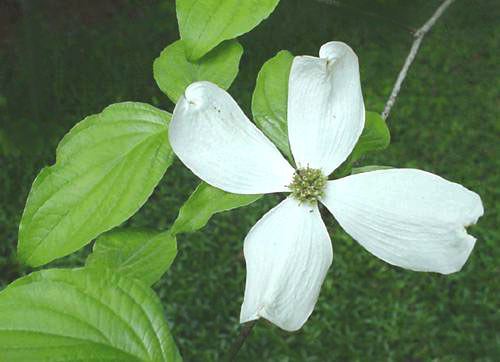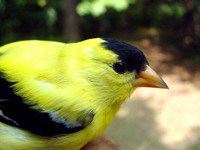 HOME: www.hiltonpond.org |
|
||
|
|
|||
|
|
|||
|
|
|||
|
|
|||
|
|
|||
|
THIS WEEK at HILTON POND |
|
On A Flowering Dogwood? Although Flowering Dogwoods (Cornus florida) are already finishing up their annual spring bloom here at Hilton Pond Center, a quick trip to northern Maryland this week indicated the species hadn't blossomed yet. It's quite interesting that only 300 miles or so of latitude can make a three-week difference in springtime activities such as bud burst and green-up.  In Upstate South Carolina, the ground beneath our dogwoods is already littered by little flakes of thin, white membranes. Most folks would say these are the discarded petals of dogwood flowers, but a closer look at the tree's floristics reveals this is not the case. Flowers are highly modified leaves that perform reproductive functions for plants that bear them. A flower petal is merely a special leaf that--typically through brightly colored pigment--may attract a pollinator. The actual reproductive work of the flower is conducted by the stamens (which bear pollen) and the pistil (which receives the pollen and allows it to contact the flower ovary, where a fruit is produced). In the case of the Flowering Dogwood, what appear to be large white petals are actually four unpigmented leaves called "bracts." These bracts are showy and do attract attention, but they aren't even part of the flower. Where the bracts join, however, there is a yellow-green area, and a close look at this finally reveals the flower cluster of the Flowering Dogwood (below).  Each quarter-inch flower has four tightly curved petals, plus two stamens and a single pistil. In the photo above, several flowers have dropped their petals--a sign they likely have been pollinated. Eventually, after all the white bracts and tiny petals have fallen, the remaining flower parts will wither and turn brown, giving rise to several fertilized ovaries--bright green berries that turn scarlet as they ripen (below right).
If you enjoy "This Week at Hilton Pond," please help Support Hilton Pond Center for Piedmont Natural History |
 By mid-summer, the current carpet of white bracts beneath each dogwood tree will turn to compost and, by mid-winter, the dogwood's berries will be eaten and its seeds disseminated by birds and small mammals--all of which assures that next spring will yield yet another crop of Flowering Dogwood seedlings at Hilton Pond Center.
By mid-summer, the current carpet of white bracts beneath each dogwood tree will turn to compost and, by mid-winter, the dogwood's berries will be eaten and its seeds disseminated by birds and small mammals--all of which assures that next spring will yield yet another crop of Flowering Dogwood seedlings at Hilton Pond Center.

